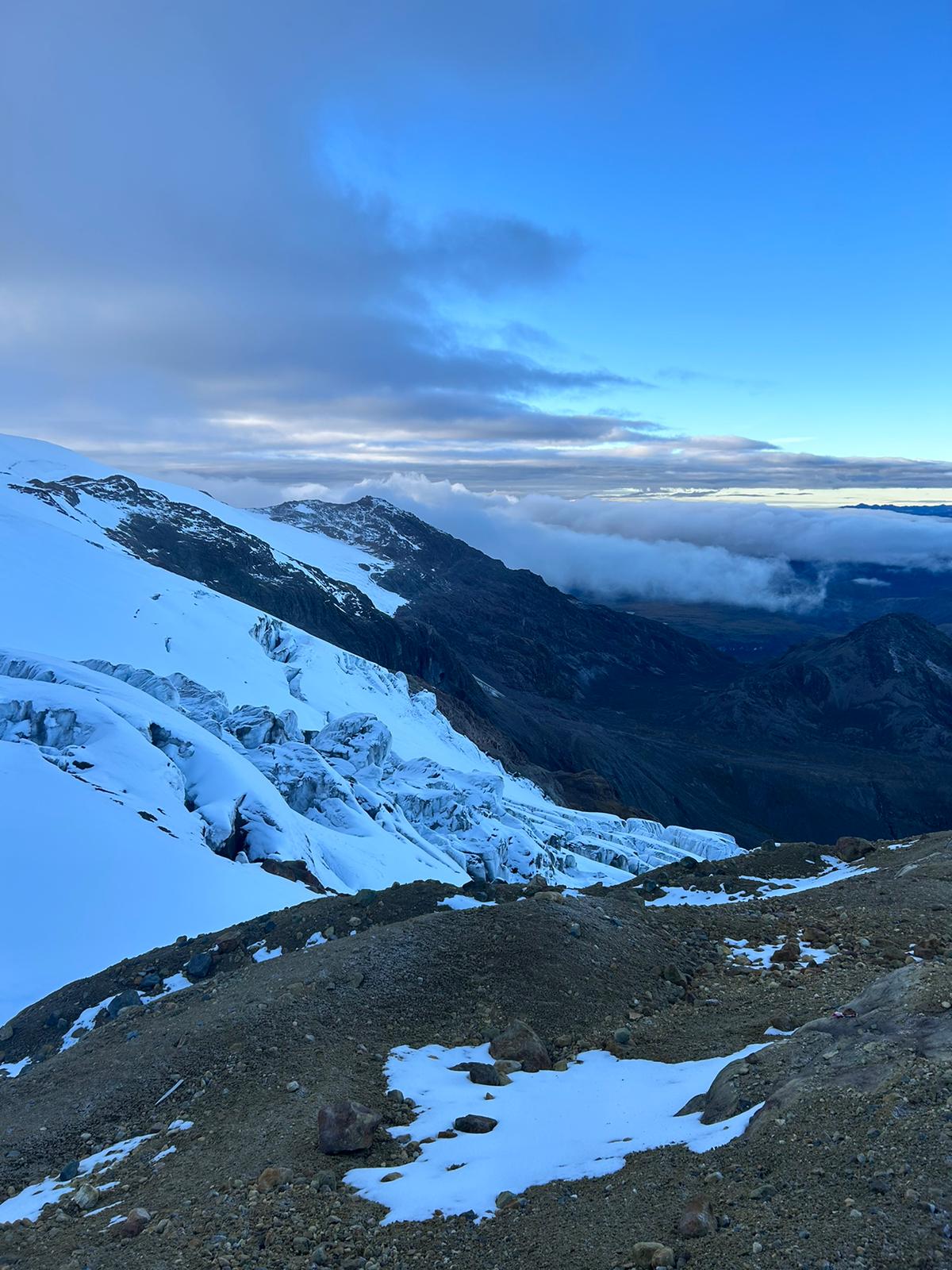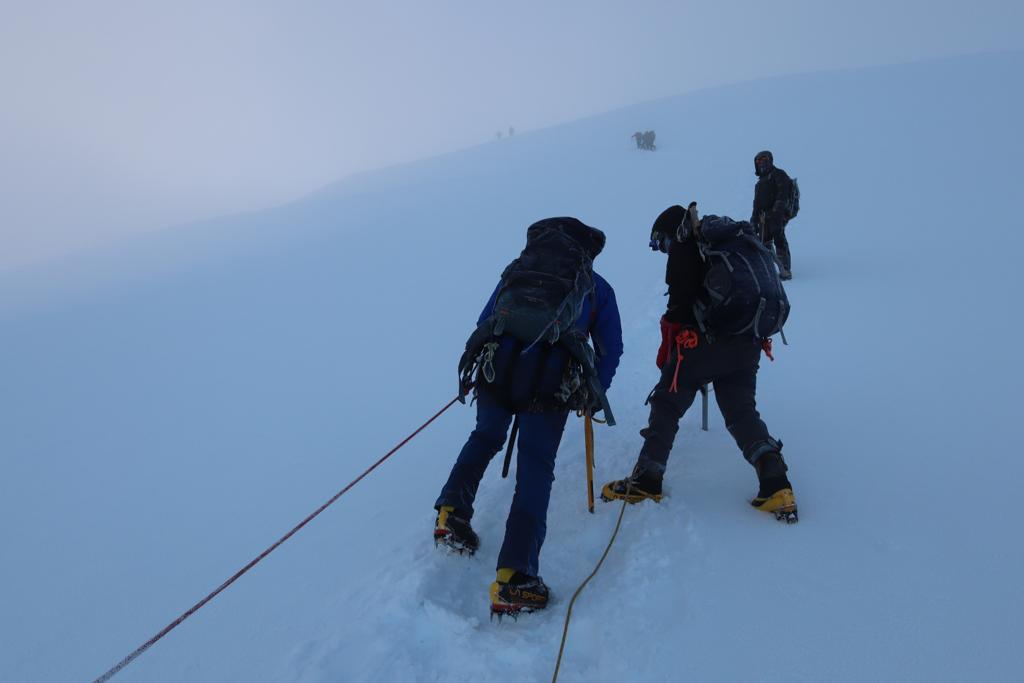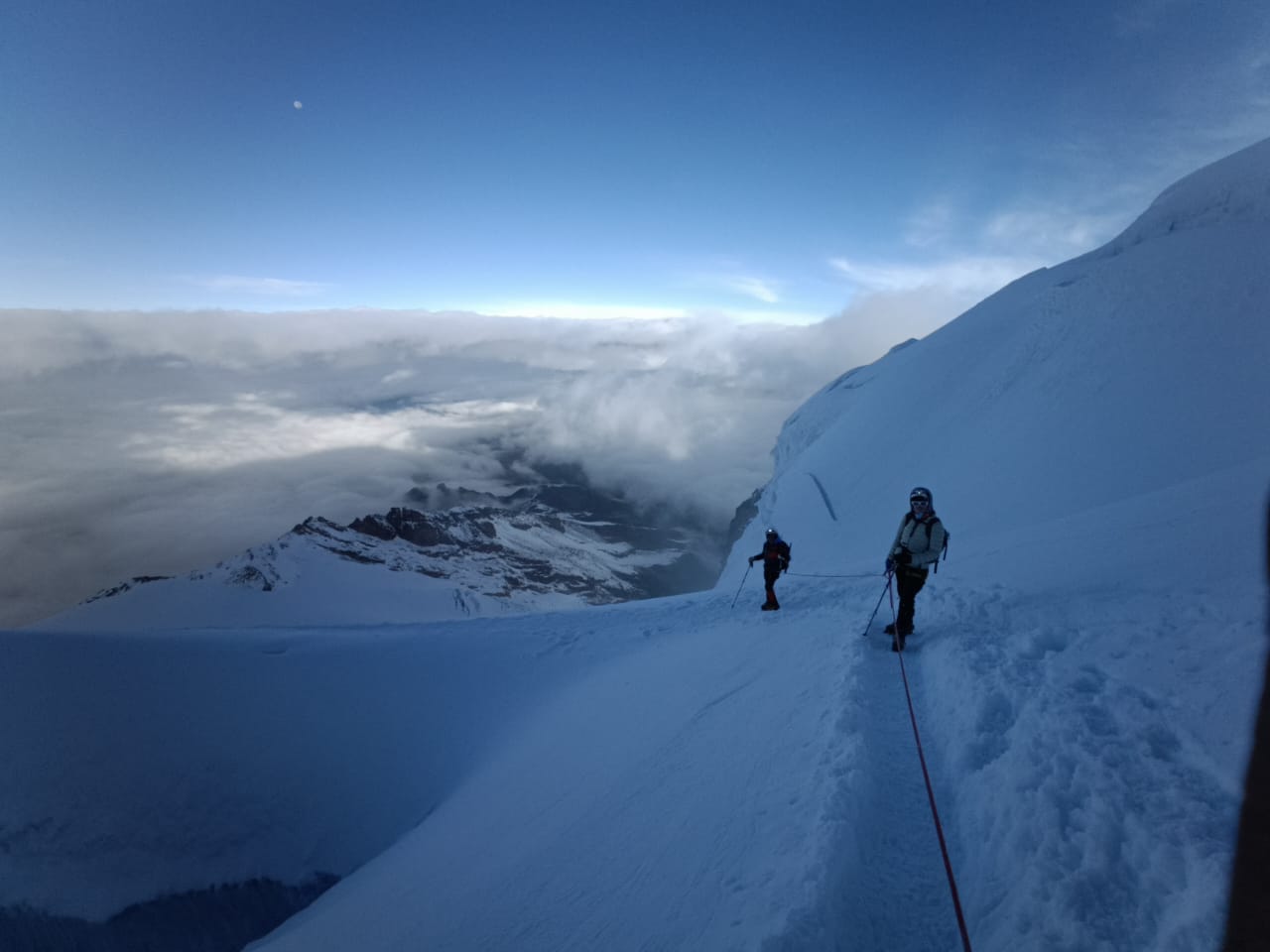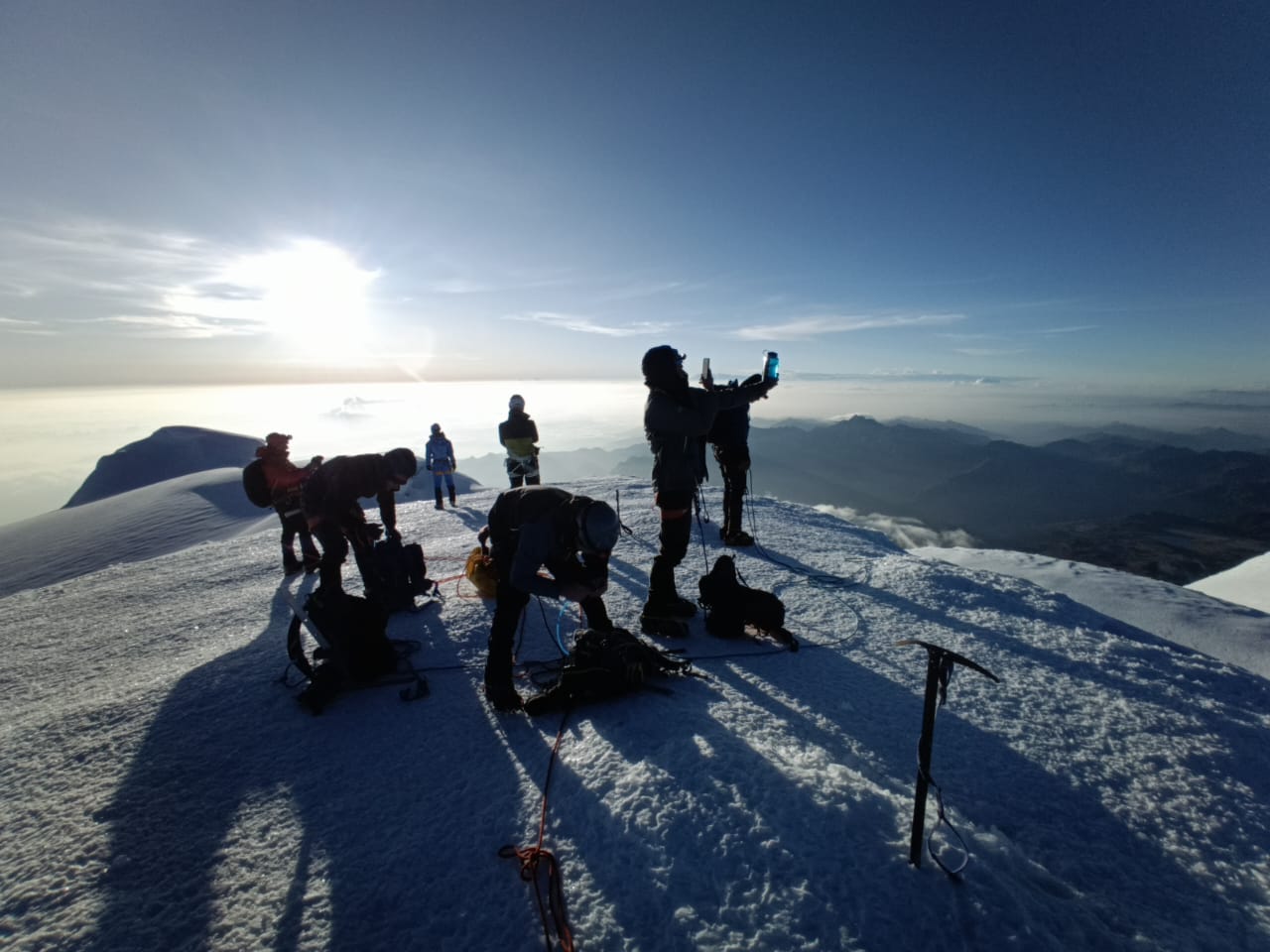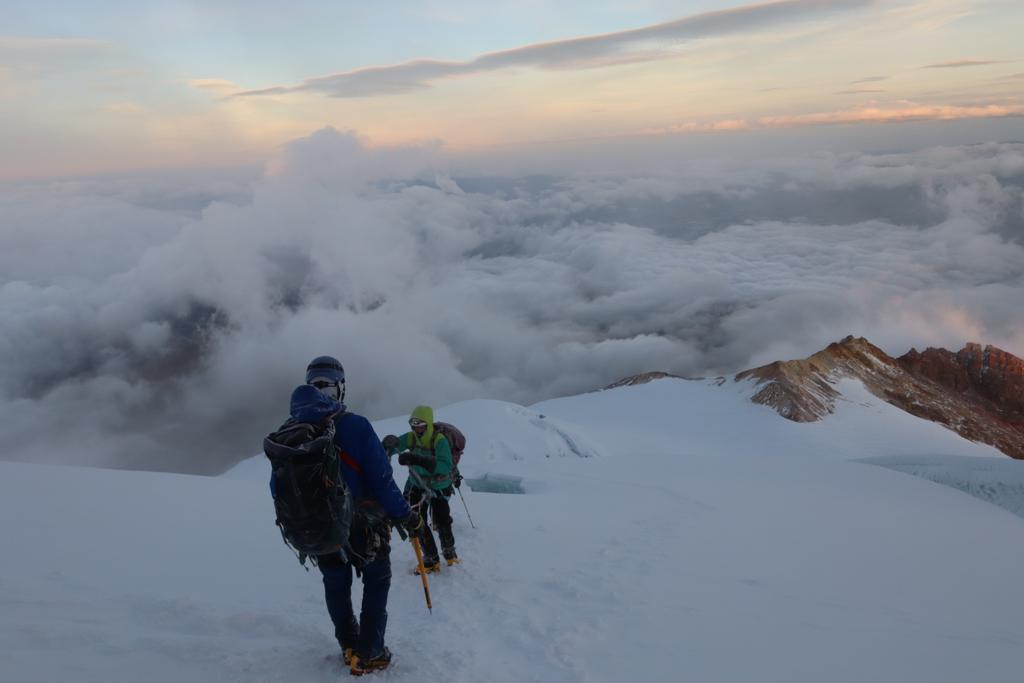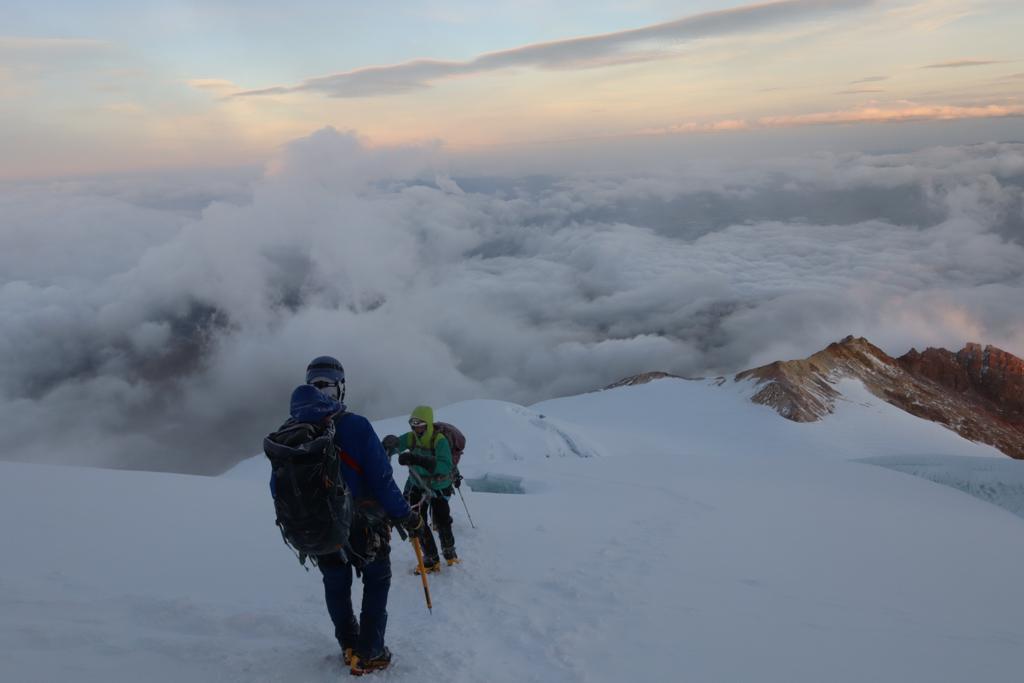Cayambe is a challenging peak, and a great lead up to Cotopaxi and Chimborazo next year. Ecuador is my new favorite location for trekking and mountaineering. Ecuador, I will be back. Check out upcoming trips.
Leading into Cayambe
I have trekked in Nepal, Kilimanjaro and joined one of Ian’s mountaineering courses in Scotland before taking on a more challenging mountaineering peak. This was my fourth trip with Ian Taylor Trekking and along with Kilimanjaro, this Cayambe trip was the best.
Where is Cayambe?
Cayambe is located in Pichincha Province, some 43 miles/ 70 km northeast of Quito. It is the third-highest mountain in Ecuador, at an elevation of 5,790m/ 18,996 feet above sea level. Cayambe is a permanent snow cap peak, it last erupted in March 1786.
Cayambe was first climbed by British adventurer Edward Whymper in 1880. Whymper and his team made first ascents of most of the volcanoes in Ecuador. Cayambe, Cotopaxi and Chimborazo all remain favorites of mountaineers today.
How Hard is Cayambe?
Don’t be fooled by this peak. It is gradual in places but the steep terrain requires good physically preparation. Cayambe is a Challenging Peak to climb.
Our plan was the climb Cayambe after 8 days of acclimatization and training. From the hut we have a steep rocky section for the first hour. Followed by another 30 minutes of more gradual mixed rocky terrain to reach crampon point.
From here we had a couple of steep sections, before entering the glacier and more moderate 20 to 30 degree angle terrain. We had about 3 hours of this moderate terrain before the slope increase to 45°.
The terrain got steeper before the bergschrund which we crossed at about 5,500m/ 18,000 feet. On the final stages, there are many cracks and seracs to be overcome, and there are immeasurable views from the summit.
Cayambe is a beautiful peak however, should not be underestimated.
Something Cool to Know about Cayambe
Cayambe is the only place on the planet where the equator crosses snow and ice. As you drive to the hut on Cayambe you cross the Equator line that circles the planet. As you climb higher, at 4,690m/ 15,387 feet check your compass.
This is the highest point in the world crossed by the Equator, Cayambe’s summit sits just north of the Equator line and it’s cold!
The Ian Taylor Trekking Difference
Firstly, I have to say the itinerary Ian and team have put together is world class. We had plenty of acclimatization which is why I always pick Ian Taylor Trekking. Standing on the summit of Cayambe was a massive achievement for me.
Secondly, the guides were outstanding. The quality of the training, guidance, education, and support throughout the trip was extremely professional. We were so well looked after throughout the whole experience in Ecuador.
Thirdly, the service, quality of the hotels, food, and scenery were all first class. The highly recommend this trip and I will be back to climb Cotopaxi and Chimborazo soon.
Finally, Cayambe was more challenging of mountaineering peak than I expected, but one I really learned a lot from this experience. One thing I could have done better on was to train a little bit more I was only training 4/5 times a week but really should have upped by weight training and endurance training.
Cayambe Verses Kilimanjaro
Cayambe is a step up from trekking Kilimanjaro. Kilimanjaro has a big summit day, but walking on trail verses snow and ice is completely different. Kilimanjaro is steep in places but the Cayambe is consistently steeper in harsher weather conditions. Follow the training regime that Ian and team recommend, and you will enjoy the trip and experience so much more.
Bryan Ashford, Cayambe July 2023.

